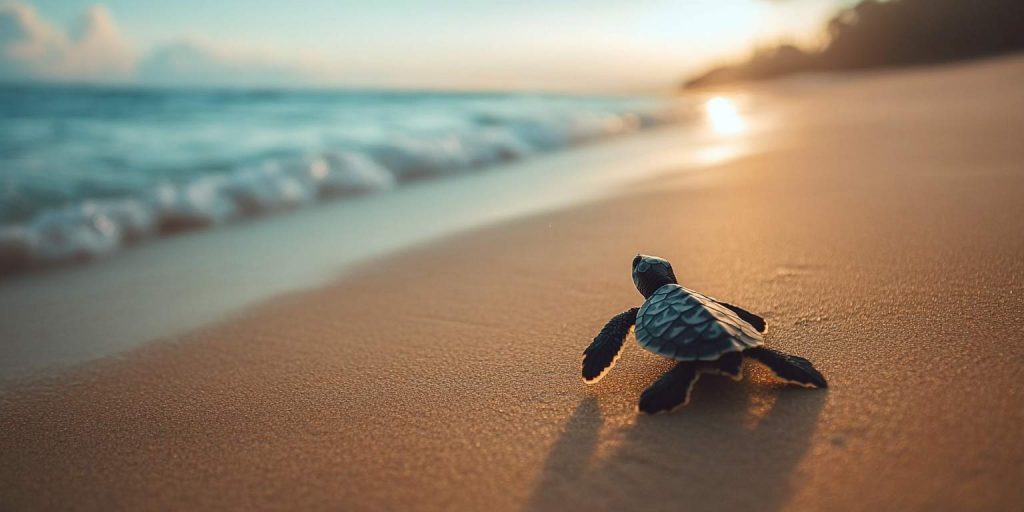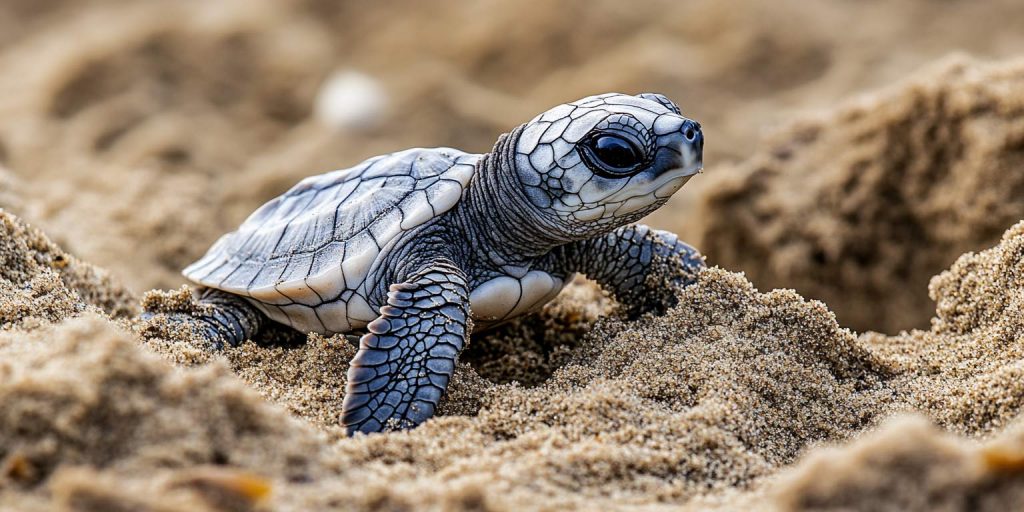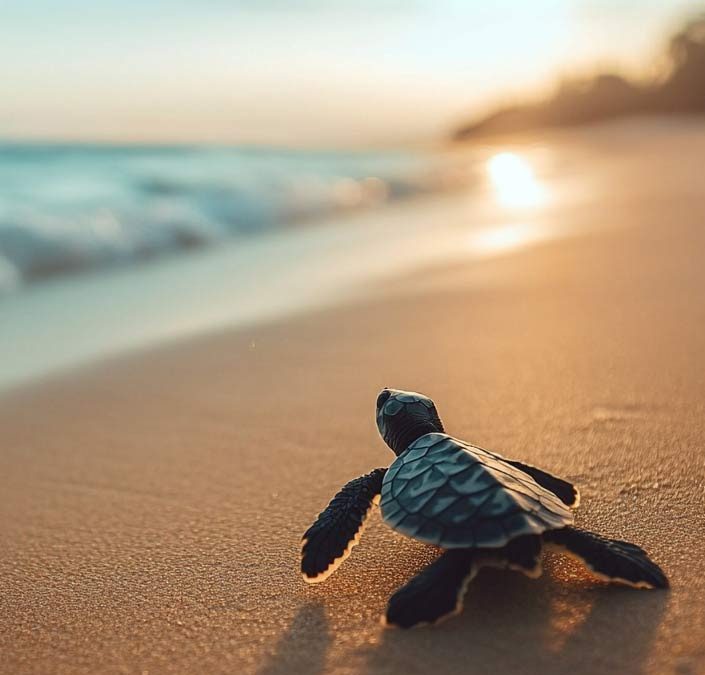
Hawaii’s green sea turtles, or Honu as they are called in Hawaiian, are incredible creatures with a unique lifecycle. These turtles can live for decades, and a big part of their lives is centered around laying eggs and welcoming new hatchlings into the world. But where exactly do these magnificent sea turtles lay their eggs? In this guide, we’ll explore their nesting habits, including when and where they lay their eggs, how to spot a nesting site, and why it’s important not to disturb them.
What Time of Year Do Green Sea Turtles Lay Eggs?
Green sea turtles lay their eggs in the warm months of summer. In Hawaii, nesting usually begins in May and continues through October. During this time, female turtles return to the beaches where they were born to lay their eggs. This journey is remarkable because many of these turtles travel hundreds of miles across the ocean just to reach the perfect beach for nesting.
When they arrive at the shore, female turtles dig deep nests in the sand using their strong flippers. Once the nest is ready, the turtle lays around 100 to 120 eggs, covers them with sand, and heads back into the ocean. The eggs will stay in the warm sand for about two months until they are ready to hatch.
What Time of Year Do Sea Turtles Hatch in Hawaii?
The baby sea turtles, called hatchlings, start to emerge from their eggs around July to December, depending on when the eggs were laid. This hatching process happens mostly at night to protect the young turtles from predators and the heat of the sun. Once hatched, the tiny turtles make their way to the ocean, following the natural light of the horizon over the water. It’s a race for survival as many predators, like birds and crabs, are waiting to grab them on their way to the sea.

How Do You Know Where Sea Turtles Lay Eggs?
Finding a sea turtle nesting site can be tricky because these turtles like to keep their nests hidden. However, there are a few signs that a beach might be a nesting area:
- Tracks in the sand that look like big tire marks from the turtle’s flippers.
- Disturbed areas of sand where the turtle has dug her nest.
- Sometimes you can even spot a turtle laying her eggs if you’re lucky and patient!
It’s important to note that these nesting sites are often in remote or protected areas. Some of Hawaii’s most well-known turtle nesting beaches are in places where people are encouraged to watch from a safe distance without disturbing the turtles or their nests.
Is It Illegal to Interrupt Their Survival?
Yes, it is absolutely illegal to disturb sea turtles or their nests in Hawaii. Green sea turtles are a threatened species, meaning they are protected under the Endangered Species Act. This law makes it illegal to touch, harass, or interfere with these turtles in any way. Breaking these laws can result in hefty fines or even jail time.
The reason for these strict laws is that sea turtles face many threats, including predators, climate change, and human activities. By protecting their nesting sites and ensuring their eggs can hatch safely, we can help preserve this amazing species for future generations.
Known Nesting Beaches for Hawaii’s Green Sea Turtles
Here are some of the known locations in Hawaii where green sea turtles are known to nest:
- East Island in the French Frigate Shoals
- Tern Island in the Northwestern Hawaiian Islands
- Laniakea Beach (also known as Turtle Beach) on Oahu
- Punalu’u Black Sand Beach on the Big Island
- Kiholo Bay on the Big Island
- Kaupoa Beach on Molokai
These beaches are vital nesting grounds for green sea turtles, and conservation efforts have been put in place to protect these areas.
Conclusion: Protecting the Future of Green Sea Turtles
Hawaii’s green sea turtles are a key part of the islands’ ecosystem and culture. By learning more about where they lay their eggs and how to protect their nesting sites, we can all do our part to ensure these incredible creatures continue to thrive. Whether you’re visiting Hawaii or just learning about these turtles from afar, remember that respecting wildlife is crucial. The future of these turtles depends on our willingness to protect their natural habitats.

